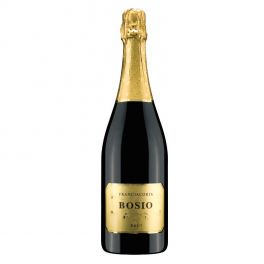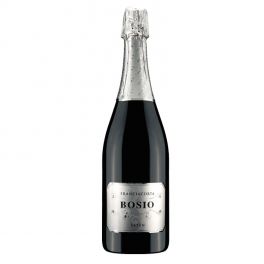Franciacorta - Bosio Franciacorta
Franciacorta Wine - Bosio Franciacorta wines.
The Franciacorta is a Metodo Classico wine with second fermentation in the bottle that is named after its area of origin: the Franciacorta. This area goes from the Iseo Lake to the Pianura Padana and from the town of Brescia to the border with the Bergamo's area. The grape varieties used for the production of the Franciacorta are Chardonnay, Pinot Nero and Pinot Bianco. In order to be called Franciacorta, this wine has to refine in the bottle with the yeast for at least 18 months which carried out the second fermentation. The different types of Franciacorta distinguish themselves for the amount of sugar used for the disgorgement, that can go from 'Non Dosato' with 3g/L of sugar to the 'Demi-Sec' with 33-50 g/L. The producer who made the history of the Franciacorta is certainly Berlucchi, who in 1963 was the first one to produce this 'metodo classico' and today he is the main producer with over 5,000,000 bottles per year. It is also important to mention Bellavista, symbol of quality and excellence. Another incredible Franciacorta's producer is the famous Ca del Bosco, well-known all over the world. Barone Pizzini, on the other hand, was the first one to produce organic Franciacorta wines.
Bosio Franciacorta is a winery located in the municipality of Corte Franca in Franciacorta wine region, a few kilometers from Lake Iseo, was founded in the 90's when the father of Cesare Bosio decides to make wine from the grapes he used to sell to other wineries. Thus began the Bosio winery history which now produces very appreciated Franciacorta wines thanks to its quality and uniqueness. The vineyards extends over 30 hectares all of them in the Franciacorta DOCG area, different exposure and altitude give different fruits so all wines from those vineyards have different characteristics that hace to be well blended at the moment of the cuvèe. Bosio Franciacorta winery main goal is to produce top quality wines while respecting the environment and then trying to develop a sustainable viticulture.



 Italiano (IT)
Italiano (IT)  Deutsch (DE)
Deutsch (DE)  Français (FR)
Français (FR)  Español (ES)
Español (ES)  Polish (PL)
Polish (PL) 

This website is protected by reCAPTCHA and the Privacy Policy & Terms and Conditions of Google